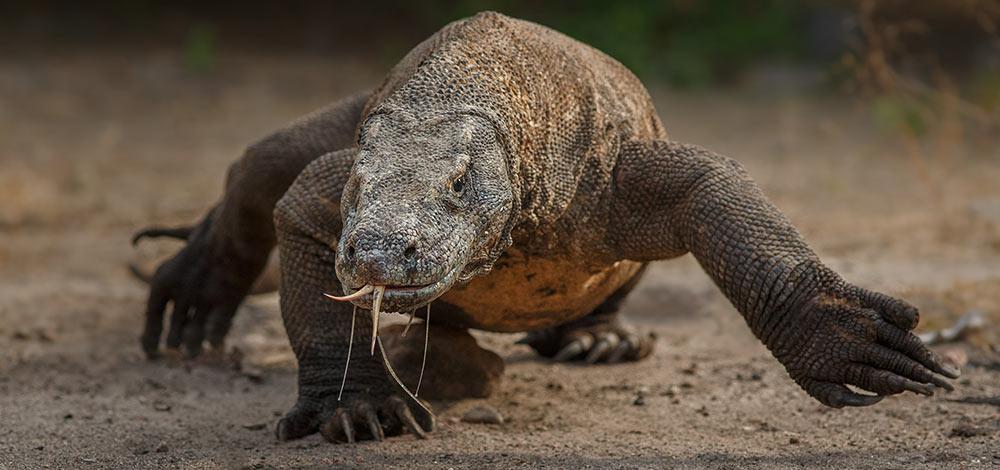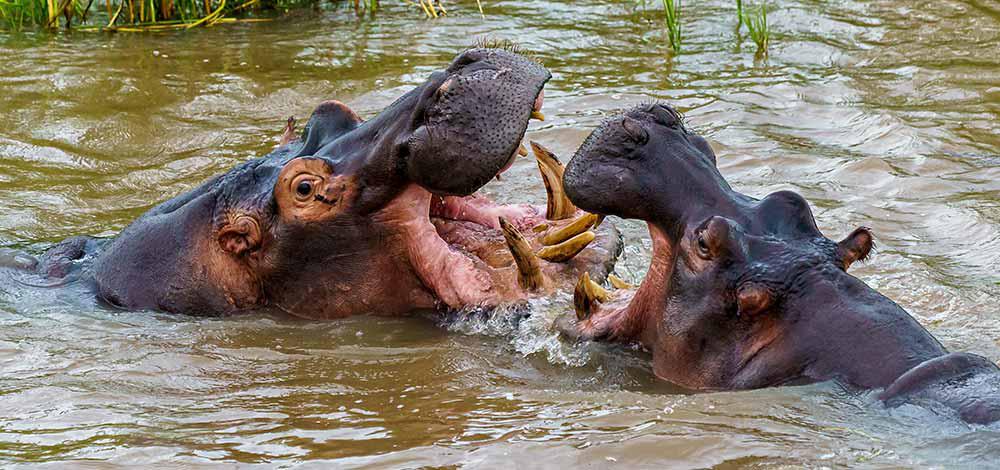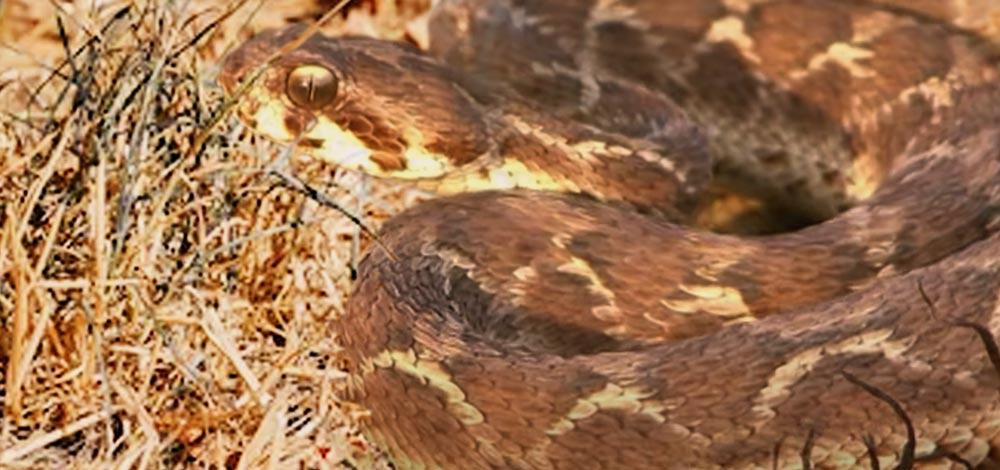Most Dangerous Animals in the World: Living creatures on Earth have the potential to be quite dangerous. While some actively contribute to a large number of fatalities among humans, others are less widely known but are extremely fatal when they come into contact. As different factors can be used to determine an animal’s level of danger, a collection of the Deadliest Animals to Humans, often referred to as the most deadliest animals in the world, is not well defined.
In this Top Dangerous Animals article, we are going to discuss the ranked list of the deadliest animals in the world in 2023 and the animal-related fatalities. We are also going to get deep insights into the predatory habits of these dangerous creatures.
Top 10 Most Deadliest Animals in the World 2023
There is no specific parameter that is universally used for the selection of the animals included in the list of World’s Deadliest Creatures. Each animal has a distinct feature that makes it a dangerous being.
We have tabulated below the list of the Top 10 Deadliest Animals in the World, judging by the number of casualties every year.
|
Mosquito
|
750,000
|
|
Humans
|
437,000
|
|
Dogs
|
25,000
|
|
Assassin Bugs
|
12,000
|
|
Indian Saw-Scaled Viper
|
11,000
|
|
Scorpions
|
5,000
|
|
Tiger
|
1,000
|
|
Hippopotamus
|
500
|
|
Saltwater Crocodile
|
200-400
|
|
Komodo Dragon
|
24-reported attacks
|
10. Komodo Dragon – Most Dangerous Animals in the World

Komodo Dragon – Most Dangerous Animal in the World
- Habitat: Indonesia
- Threats: Venomous Bites, Powerful Jaws
- Human Casualties Per Year: 24
- Characteristics: Large Venomous Lizards with Powerful Bites and Serrated Teeth
The Komodo Dragon, the tenth deadliest animal globally, stands as the largest lizard worldwide, capable of reaching lengths of up to 10 feet and weighing around 300 pounds. These reptiles possess venomous bites that deliver lethal doses of bacteria to their prey. As apex predators, they reign supreme atop their ecosystems’ food chains and often scavenge on carcasses of deceased animals. Despite their formidable status, Komodo Dragons face endangerment due to habitat loss and hunting, presenting a concerning threat to their survival as an endangered species.
Fun Fact:
- Komodo dragons are the only known lizards that can reproduce asexually. This means that a female komodo dragon can lay eggs without mating with a male.
- Komodo dragons have a long lifespan, with some individuals living to be over 30 years old.
9. Saltwater Crocodile – Most Dangerous Animals in the World

Saltwater Crocodile – Most Dangerous Animal in the World
- Habitat: Tropical & Subtropical Regions
- Threats: Ambush Attacks, Powerful Jaws
- Human Casualties Per Year: 200-400
- Characteristics: Large Ambush Predators with strong jaws and sharp teeth
The Saltwater Crocodile secures its place as the ninth deadliest animal globally, reigning as the largest living crocodile species and the largest reptile worldwide. These formidable creatures inhabit diverse habitats, ranging from coastal waters and brackish wetlands to freshwater rivers. Their distribution spans from India’s east coast across Southeast Asia and the Sundaic region to northern Australia and Micronesia, showcasing their remarkable adaptability to various environments.
Additional pointers:
- Saltwater crocodiles can grow up to 20 feet long and weigh up to 2,300 pounds.
- They have a powerful bite that can crush bone.
- Saltwater crocodiles are ambush predators and typically wait for their prey to come to them.
- Saltwater crocodiles are solitary animals and only come together to mate.
- Female saltwater crocodiles lay up to 90 eggs at a time.
- Saltwater crocodiles can live for up to 70 years.
Fun Fact:
- Saltwater crocodiles have the strongest bite force of any living animal, with a bite force of up to 3,700 pounds per square inch.
- Additional fun fact: Saltwater crocodiles are very good swimmers and can swim at speeds of up to 18 miles per hour.
8. Hippopotamus – Most Deadliest Animals in the World

Hippopotamus – Most Dangerous Animal in the World
Habitat: Africa
Threats: Aggression, Territoriality
Human Casualties Per Year: 500
Characteristics: Highly Territorial and Aggressive Herbivores, especially mothers with calves
Hippopotamus is the eighth deadliest animal in the world. The third largest land mammal on Earth, after the elephant and white rhinoceros. Semi-aquatic, spending most of their time in water to stay cool and protect their skin from the sun. Herbivores, with a diet consisting mainly of grass. Highly territorial and aggressive, especially towards humans. One of the most dangerous animals in Africa.
Fun Fact:
- Hippopotamuses produce a reddish-brown substance called “blood sweat” from glands in their skin. This substance is actually a secretion that helps to protect their skin from the sun and from bacteria.
- Additional fun fact: Hippopotamuses can hold their breath for up to five minutes, which allows them to stay underwater for long periods of time.
7. Tiger – Most Dangerous Animals in the World

Tiger – Most Dangerous Animal in the World
- Habitat: Asia
- Threats: Predatory Attacks, Territoriality
- Human Casualties Per Year: 1,000
- Characteristics: Apex predators with powerful jaws and claws
The Tiger ranks as the seventh deadliest animal globally and stands as the largest cat species, capable of growing up to 10 feet long and weighing up to 660 pounds. As apex predators, they hold the pinnacle position in their ecosystems’ food chains. These solitary hunters rely on stalking and ambushing their prey for survival. Tigers inhabit diverse habitats like forests, grasslands, and wetlands, yet they face endangerment due to habitat loss and poaching, presenting a concerning threat to their existence.
Fun Fact:
- Tigers have stripes that are unique to each individual, just like human fingerprints. This helps them to identify each other and to camouflage themselves in their environment.
- Additional fun fact: Tigers are the only big cats that can swim well. They often use water to cool off and to escape from predators.
6. Scorpions – Most Dangerous Animals in the World
- Habitat: Worldwide
- Threats: Venomous Stings
- Human Casualties Per Year: 5,000
- Characteristics: Powerful neurotoxins delivered through stinger
Scorpions claim the spot as the sixth deadliest animals globally and belong to the arachnid family, akin to spiders, ticks, and mites. Characterized by eight legs, two pincers, and a venomous stinger located at the tail’s end, they are widely distributed across the globe, except for Antarctica. As carnivores, their diet comprises insects, spiders, and other small animals, and being nocturnal creatures, they remain active primarily during the night.
Fun Fact:
- Scorpions can glow under ultraviolet light! This is because they have a fluorescent protein in their exoskeletons.
- Additional fun fact: Scorpions are very hardy creatures and can survive for long periods of time without food or water.
5. Indian Saw-Scaled Viper – Most Dangerous Animals in the World

Indian Saw-Scaled Viper – Most Dangerous Animal in the World
- Habitat: South & Southeast Asia
- Threats: Venomous Bites
- Human Casualties Per Year: 11,000
- Characteristics: Highly venomous with aggressive temperament, often found in densely populated areas
The Indian Saw-Scaled Viper earns its place as the fifth deadliest animal globally, recognized as a small yet venomous viper snake inhabiting India, Sri Lanka, and Pakistan. Typically reaching lengths of about 18 to 24 inches, this viper exhibits a distinctive saw-like ridge on its scales. Functioning as nocturnal and ambush predators, their venom is highly potent, posing a severe threat to humans by inflicting serious injuries or even death upon envenomation.
Fun Fact:
- Indian saw-scaled vipers are one of the most common venomous snakes in India. They are responsible for more snakebite deaths than any other snake species in the country.
- Indian saw-scaled vipers have a unique way of hunting. They vibrate their tails to mimic the movement of worms or insects, which attracts their prey. Once their prey is close enough, the viper strikes and bites it.
4. Assassin Bugs – Most Dangerous Animals in the World

Assassin Bug – Most Dangerous Animal in the World
- Habitat: Latin America
- Threats: Chagas Disease Parasite Transmission
- Human Casualties Per Year: 12,000
- Characteristics: Bite transmission of Trypanosoma cruzi parasite, often during sleep
The Assassin Bug holds the rank as the fourth deadliest animal worldwide. These predatory insects, belonging to the Reduviidae family, inhabit diverse environments globally, spanning forests, grasslands, and deserts. Ranging in size from 0.2 to 2.5 inches long, these relatively small creatures feature elongated bodies and slender legs. Their notoriety stems from their potent jaws and venomous bites, employed while preying on a variety of insects such as spiders, bedbugs, and cockroaches, showcasing their role as formidable hunters in the insect world.
Fun Fact:
- Assassin bugs are sometimes called “kissing bugs” because they have been known to bite people on the lips. However, assassin bug bites are not usually dangerous to humans.
- Additional fun fact: Assassin bugs are very good at camouflaging themselves. They often blend in with their surroundings to avoid being seen by their prey and predators.
3. Dogs – Most Dangerous Animals in the World

Dogs – Most Dangerous Animal in the World
- Habitat: Worldwide
- Threats: Rabies virus transmission
- Human Casualties Per Year: 25,000
- Characteristics: Bite transmission of fatal neurotropic virus, often from unvaccinated or stray dogs
Dogs, considered the third deadliest animals, are canines closely linked to wolves, foxes, and coyotes. Humans domesticated them over 15,000 years ago, resulting in a vast array of sizes and shapes, ranging from the petite Chihuahua to the colossal Great Dane, accompanied by diverse coat colors and patterns. These intelligent and social animals forge robust bonds with their owners, showcasing their exceptional capacity for forming strong connections.
Fun Fact:
- Dogs have a much better sense of smell than humans. They have about 300 million olfactory receptors in their noses, compared to about 5 million in humans. This allows them to smell things that we can’t even imagine!
- Additional fun fact: Dogs can wag their tails in different directions to communicate different emotions. For example, a dog wagging its tail to the right is usually happy and excited, while a dog wagging its tail to the left is usually stressed or anxious.
2. Humans – Most Dangerous Animals in the World

Humans – Most Dangerous Animal in the World
- Habitat: Worldwide
- Threats: Violence, Intentional Harm
- Human Casualties Per Year: 437,000
- Characteristics: Sophisticated weaponry, territoriality, psychological factors
Humans, the second deadliest animals globally, are capable of walking upright on two legs. With highly developed brains enabling learning, thinking, and reasoning abilities, humans exhibit complex emotions and engage in intricate social interactions. Remarkably widespread, inhabiting every continent except Antarctica, humans wield a profound influence on the environment, yielding both positive and negative impacts on the planet.
Fun Fact:
- Humans are the only animals on Earth that can blush. Blushing is a physiological response to embarrassment, shame, or excitement. It is thought to be a way of communicating our emotions to others.
- Additional fun fact: Humans are the only animals on Earth that have language. Language allows us to communicate complex ideas and thoughts with each other. It is also a powerful tool for social bonding and cooperation.
1. Mosquito (750,000 human casualties every year) – Most Dangerous Animals in the World

Mosquito – Most Dangerous in the World
- Habitat: Worldwide
- Threats: Diseases (Malaria, Dengue Fever, Yellow Fever)
- Human Casualties Per Year: 750,000
- Characteristics: Tiny size, efficient transmission of deadly parasites, high breeding rate
Mosquitoes, the world’s most deadliest creatures, are small flying insects found everywhere. While females need blood to lay eggs, males solely rely on nectar and plant juices. Unfortunately, these mosquitoes transmit various diseases like malaria, dengue fever, and yellow fever, making them among the deadliest animals globally, resulting in millions of deaths annually.
Fun Fact:
- Mosquitoes can fly up to 3 miles per hour.
- Additional fun fact: Mosquitoes are attracted to carbon dioxide and heat, which is why they tend to bite people who are sweating or breathing heavily.
Conclusion- Most Deadliest Animals in 2023
The world’s deadliest animals in 2023 come in a wide variety of shapes and sizes. While some are known for their aggressive behavior, others are responsible for a high number of human casualties every year. These predatory creatures are integral to the ecosystems in which they reside, and their survival is vital for maintaining the balance of nature. We should protect the homes of these dangerous animals so they can survive in the wildlife for future generations while also be cognizant of their dangers.
Also Check:
Most Dangerous Animal in the World – FAQs
Q1. What makes an animal the “most dangerous” in the world?
An animal is considered the most dangerous based on factors like its potential to harm humans or other species, including its behavior, venom, size, and the number of fatalities it causes.
Q2. Which animal is the deadliest to humans?
Mosquitoes are among the deadliest animals due to their ability to transmit diseases like malaria, resulting in millions of human fatalities each year.
Q3. What is the most dangerous animal besides mosquitoes?
The most dangerous animal besides mosquitoes is the saw-scaled viper, responsible for an estimated 138,000 deaths per year. These small snakes are found in Africa, Asia, and the Middle East and are known for their potent venom and aggressive behavior.
Here are some other dangerous animals, along with their estimated annual deaths:
- Freshwater snails: 200,000 deaths (due to diseases transmitted by the snails)
- Assassin bugs: 10,000 deaths (due to Chagas disease transmitted by the bugs)
- Scorpions: 3,300 deaths (due to venomous stings)
- Ascaris roundworms: 2,500 deaths (intestinal parasites)
- Nile crocodile: 300 deaths
- Hippos: 500 deaths
- Elephants: 600 deaths
- Lions: 200 deaths
Q. What dangerous animals are in Antarctica?
While Antarctica is home to diverse wildlife, most pose little threat to humans due to their remoteness and limited interaction. However, some potentially dangerous animals include:
- Leopard seals: Large predators known for attacking penguins and seals, though attacks on humans are rare.
- Southern elephant seals: Aggressive males can weigh up to 4 tons and defend their territory fiercely.
- Giant petrels: Large, scavenging birds with powerful beaks that can inflict serious injuries.
- Skuas: Similar to gulls but more aggressive, known for attacking penguins and stealing food.
Q. What are Top 30 deadliest animals in the world?
Here’s a list of the top 30 deadliest animals according to various sources:
- Mosquito (2.7 million deaths)
- Saw-scaled viper (138,000 deaths)
- Freshwater snail (200,000 deaths)
- Assassin bug (10,000 deaths)
- Scorpions (3,300 deaths)
- Ascaris roundworm (2,500 deaths)
- Tsetse fly (10,000 deaths)
- Dogs (25,000 deaths)
- Snakes (50,000 deaths)
- Nile crocodile (300 deaths)
- Hippopotamus (500 deaths)
- Elephant (600 deaths)
- Lion (200 deaths)
- Tapeworm (2,700 deaths)
- Hookworm (2,200 deaths)
- Liver fluke (10,000 deaths)
- Schistosomiasis (200,000 deaths)
- Ascariasis (100,000 deaths)
- Trichuriasis (600 million infections)
- Hookworm disease (500 million infections)
- Echinococcosis (200,000 infections)
- Rabies (59,000 deaths)
- African trypanosomiasis (10,000 deaths)
- Chagas disease (10,000 deaths)
- Leishmaniasis (50,000 deaths)
- Dengue fever (20,000 deaths)
- Japanese encephalitis (15,000 deaths)
- West Nile Virus (1,000 deaths)
- Yellow fever (700 deaths)
- Ebola virus (5,000 deaths)
Please note that these are estimates and the actual number of deaths can vary depending on the source and methodology used.
Like Article
Suggest improvement
Share your thoughts in the comments
Please Login to comment...